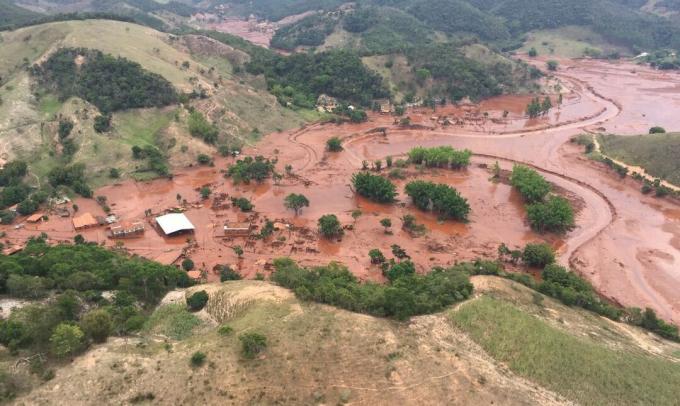cases of environmental disasters they are often caused by human interference and mismanagement. These disasters cause serious impacts on the ground, air and water. In addition, they also affect all forms of life.
Industrial and urban development, despite providing economic growth, can take a heavy toll on the planet. That's because when done inconsequentially, the effects are undeniable.
see more
Astrology and genius: THESE are the 4 most brilliant signs of…
iPhones that didn't succeed: 5 launches rejected by the public!
See below for more details about the 14 main environmental disasters in Brazil.
Environmental disasters are significant changes to the environment. Some examples of degradation are: pollution, destruction of green areas and contamination of contaminated water. The effects are lasting not only for physical well-being, but also for countless aspects of the lives of those affected.
O tanker Tarik Iba Ziyad, chartered by Petrobras, broke the ship's hull in front of the Botafogo bay. Thus, 6 thousand tons of oil were leaked, creating stains 10 centimeters thick in some places, as well as fires.
In the 1980s, Cubatão, in São Paulo, was a region with high petrochemical activity, a fact that resulted in the contamination of air, soil and water in the region. With high rates of disease and death, the municipality was considered the most polluted in the world, according to the United Nations (UN).
Therefore, Cubatão became known internationally as death Valey.

A failure in Petrobras' underground pipelines caused a gasoline leak in Vila Socó, in Cubatão, São Paulo. Thus, with 700,000 liters scattered around, a fire destroyed part of the region and resulted in 93 official deaths. With 3,000 people homeless, residents argue that more than 500 people died in the fire.
In September 1987, one of the largest radioactive accidents in the world occurred. In a search for material, two garbage collectors entered an abandoned hospital and found a capsule. The duo believed they could sell the object to a junkyard, and when they opened the capsule, they found a white powder that glowed in the dark.
By showing it to acquaintances and family members, the men unconsciously contaminated water, soil and people, including the child Leide das Neves. In total, officials recorded four deaths and hundreds of other infected people who developed illnesses.
In 1996, Justice sentenced three partners and an employee of the abandoned hospital for culpable homicide. The sentence was three years and two months in prison, but it was exchanged for the provision of voluntary services.
Due to the rupture of a Petrobras pipeline, there was a leak of 1.2 million liters of fuel oil. This oil reached about 25 beaches, spread over 50 km2, destroyed and contaminated the entire mangrove area on site.
A pipeline was ruptured during the transfer of oil from the maritime terminal of São Francisco do Sul, in Santa Catarina, for the Presidente Getúlio Vargas Refinery (Repar), in Araucária, Paraná. Therefore, 4 million liters leaked into the Arroio Saldanha basin and into the Barigui and Iguaçu rivers.
The Brazilian Institute for the Environment and Renewable Natural Resources (Ibama) imposed a fine of 168 million reais.

The accident began on March 15 with an explosion on the Petrobras P-36 platform, with 175 people on board. In total, there were three explosions and 11 deaths. On the 18th, the platform was completely immersed in the water.
At Fazenda Bom Destino, in Cataguases, in Minas Gerais, with the rupture of a dam, waste from pulp production leaked. The accident, which hit the states of Minas Gerais, Espírito Santo and Rio de Janeiro, left 600,000 people without water for weeks.
There was a rupture of the Bom Jardim mining dam, on the Pomba Mineração River, which caused a leak of toxic mud. As a result, thousands of people were affected. Also, the destruction of the local ecosystem took place.
As a result of a series of rains and infrastructure problems, there were landslides and floods that caused 800 deaths and destruction of countless houses in the municipalities of Petrópolis, São José do Vale do Rio Preto, Teresópolis, Sumidouro, Nova Friburgo, Bom Garden, Areal.

Because of an unsuccessful drilling, an oil leak from the Chevron company occurred. According to experts, the area was not suitable for drilling. As a consequence, the ecosystem was heavily impacted and it is estimated that the oil spread over 162 km².
During a transfer of fuel, an explosion and fires occurred. There were no deaths, but local people suffered breathing problems. Also, the water used to control the fire was drained into the sea, resulting in the death of nine tons of fish.

The rupture of the Fundão dam, which held mining tailings, released 62 million m3 of mud on the local population. There were 19 deaths accounted for, in addition to water and soil contamination and destruction of the ecosystem.
The mud spread and reached more than 19 municipalities. In addition, more than two thousand hectares of land were unfit for planting.
As well as the rupture of Mariana, Brumadinho suffered from the leak of toxic mud, which caused 259 deaths and 15 disappearances. The duration of disaster impacts on water, soil, fauna, flora and population is unpredictable.
Read too: